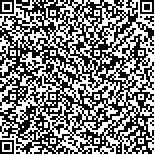王艳,郭子楠,董传菲,等.夹脊电针结合神经松动术对兔坐骨神经损伤后下肢运动功能的影响及其相关机制[J].中华物理医学与康复杂志,2019,41(2):139-145
扫码阅读全文

|
| 夹脊电针结合神经松动术对兔坐骨神经损伤后下肢运动功能的影响及其相关机制 |
|
| |
| DOI:DOI:10.3760/cma.j.issn.0254-1424.2019.02.015 |
| 中文关键词: 坐骨神经损伤 夹脊电针 神经松动术 Ras相关C3肉毒素底物1 |
| 英文关键词: Sciatic nerve injury Jiaji acupoint Electroacupuncture Nerve mobilization C3 botoxin substrate 1 |
| 基金项目:国家自然科学基金项目(81674077);黑龙江中医药大学研究生创新科研项目 (yjscx2017045);黑龙江省自然科学基金项目(H2017062);哈尔滨市科技局优秀学科带头人项目(2016RAXYJ106) |
|
| 摘要点击次数: 9845 |
| 全文下载次数: 7927 |
| 中文摘要: |
| 目的 夹脊电针结合神经松动术对兔坐骨神经损伤后下肢运动功能以及Ras相关C3肉毒素底物1的mRNA和蛋白表达的影响。 方法 采用随机数表法将180只新西兰家兔分为正常对照组、模型对照组、夹脊电针组、神经松动术组、夹脊电针结合神经松动术组。每组36只,再按取材时间点分为治疗1周、2周、4 周后共3个亚组,每个亚组12只新西兰家兔。模型对照组、夹脊电针组、神经松动术组、夹脊电针结合神经松动术组均采用钳夹法造成坐骨神经损伤模型,正常对照组、模型对照组不做任何干预,神经松动术组行神经松动术治疗,夹脊电针组进行夹脊电针治疗,夹脊电针结合神经松动术组进行夹脊电针和神经松动术治疗。于治疗1、2、4周后采用趾张反射评分和改良的Tarlov评分评定5组大鼠新西兰家兔的下肢功能恢复情况。并于治疗1、2、4周后,每组均抽取12只新西兰家兔放血处死后取坐骨神经和相应节段脊髓(L4-L6段),采用聚合酶链反应(PCR)检测和免疫印迹(Western blot)检测Ras相关C3肉毒素底物1 mRNA及蛋白的表达。 结果 治疗后1、2、4周后,夹脊电针组、神经松动术组和夹脊电针结合神经松动术组新西兰家兔的坐骨神经功能均优于模型对照组同时间点,但均弱于正常对照组同时间点,差异均有统计学意义(P<0.05);且夹脊电针结合神经松动术组各时间点的坐骨神经功能均优于夹脊电针组和神经松动术组同时间点,差异均有统计学意义(P<0.05)。经PCR灰度分析,治疗1、2、4周后,夹脊电针结合神经松动术组节段脊髓和坐骨神经中Ras相关C3肉毒素底物1mRNA的表达量高于夹脊电针组和神经松动术组同时间点,差异均有统计学意义(P<0.01)。经Western blot灰度分析,治疗1周后,夹脊电针结合神经松动术组节段脊髓Ras相关C3肉毒素底物1蛋白的表达量显著高于夹脊电针组,差异有统计学意义(P<0.01);治疗2、4周后,夹脊电针结合神经松动术组节段脊髓Ras相关C3肉毒素底物1蛋白的表达量显著高于夹脊电针组和神经松动术组同时间点,差异均有统计学意义(P<0.01)。经Western blot灰度分析,治疗2、4周后,夹脊电针结合神经松动术组坐骨神经中Ras相关C3肉毒素底物1蛋白的表达量显著高于夹脊电针组和神经松动术组同时间点,差异均有统计学意义(P<0.01)。 结论 神经松动术结合夹脊电针治疗可促进坐骨神经损伤后轴突再生的作用,其作用机制可能与上调损伤的坐骨神经和相应脊髓节段Ras相关C3肉毒素底物1基因以及蛋白的表达有关。 |
| 英文摘要: |
| Objective To investigate the effect of combining electroacupuncture with nerve mobilization to improve lower extremity motor function after sciatic nerve injury. And to document any changes in mRNA and protein expression of Ras-related C3 botoxin substrate 1. Methods 180 New Zealand rabbits were randomly divided into a normal control group, a model control group, an electroacupuncture group, a nerve mobilization group, and an electroacupuncture combined with nerve mobilization group, each of 36. Sciatic nerve injury was modelled using the clamping method in all except the normal control group. The control group had no intervention, while the nerve mobilization group, the electroacupuncture group and the combined group were treated with nerve mobilization, and/or electroacupuncture applied to the rabbit analogue of the jiaji acupoint. After 1, 2, and 4 weeks of treatment, toe reflex scores and modified Tarlov scores were used to assess any functional recovery. After 1, 2, and 4 weeks of treatment, 12 of the rabbits in each group were sacrificed and the sciatic nerve and the L4-L6 segments of the spinal cord were resected. The expression of Ras-related C3 botoxin substrate 1 mRNA and protein was detected using the polymerase chain reaction and western blotting. Results Sciatic nerve function and the expression of Ras-related C3 botoxin substrate 1 mRNA in the spinal cords and sciatic nerves of the three treatment groups were significantly higher than in the model control group at all three time points, but significantly lower than in the normal control group. The combined group′s results were significantly better than with electroacupuncture or nerve mobilization alone. After 1, 2, and 4 weeks of treatment, the average expression of Ras-related C3 botoxin substrate 1 protein in the spinal cords of the three treatment groups was significantly higher than the model control group′s average, but significantly lower than that of the normal control group at the same time point. After 1 week of treatment the average expression of Ras-related C3 botoxin substrate 1 protein in the spinal cords of the combined group was significantly higher than that in the group receiving electroacupuncture alone. After 2 and 4 weeks it was also significantly higher than the nerve mobilization group′s average. After 1 week of treatment, the average expression of Ras-related C3 botoxin substrate 1 protein in the sciatic nerves of all three treatment groups was significantly lower than that of the control group. However, 1 and 3 weeks later the average protein expression in the sciatic nerves was significantly higher than in the model control group, but significantly lower than in the normal control group at the same time points. The combined group′s average was then significantly higher than those of the groups receiving electroacupuncture or nerve mobilization alone at the same time point. Conclusion Nerve stimulation combined with electroacupuncture applied to the jiaji acupoint can promote the regeneration of axons after sciatic nerve injury. The mechanism may be related to up-regulation of the Ras-related C3 botoxin substrate 1 gene and protein expression in the injured sciatic nerve and corresponding spinal cord segments. |
|
查看全文
查看/发表评论 下载PDF阅读器 |
| 关闭 |
|
|
|